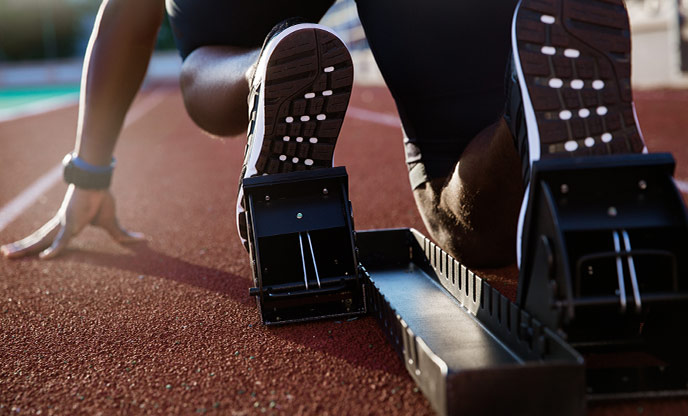
Sprinting is one of the purest and most powerful physique-shaping exercises. Though it may seem a sprinter is propelling just their legs as they surge through the track or down a road, a variety of muscles are at work to help make the body as lean as it can be. But sprinting also has many benefits beyond physical ones, such as providing stress relief and building perseverance and discipline.
Strength Building Sport – Sprints are a type of anaerobic exercise, this means that they will trigger muscle building, increasing the size and strength of the powerful, fast-twitch fibers. Sprinting can enhance protein synthesis pathways by as much as 230 percent! With the right nutrition and recovery, will lead to muscle building, allowing the body to become leaner and enabling one to run faster, longer, and more efficiently.
Helps Lose Fat – Sprint training is one of the most efficient conditioning exercises that can create significant and notable fat loss. Compared to long and steady aerobic training, like running or jogging, sprinting enables one to lose body whereas, in aerobic training, one is more likely to lose body mass – which includes fat, but also water weight. When wanting to lose weight and become healthier, the aim should be to lose fat. Sprint training will help burn fat faster and preserve or even build muscle.
Enhances Endurance Power – Doing sprints can help endurance in long-distance running as well. In fact, sprinting is one of the most efficient ways to build endurance. Going at max speeds on a sprint will improve endurance capacity, amplifying maximal oxygen uptake and increasing the time it takes for fatigue to set in. Since sprints train the body to burn fat for fuel, they preserve muscle glycogen and prolong work capacity.
Increases Speed and Performance – Sprinting is essentially speed training. Since sprints build muscle and target the fast-twitch fibers, they increase speed and power, leading to a faster running or cycling speed. An explosive start, puts a load of power in muscles and the more this is repeated, the more one’s power speed increases.
Good For Heart Health – Sprinting also comes with cardiovascular benefits. It can help lower blood pressure. The fast-twitch muscles that one is building with sprints can improve heart function. Doing all those explosions and putting all that extra effort into muscles, makes the heart work and pump harder which will improve heart health. Also, like every exercise, one has better circulation. Having a strong heart will reduce the chances of getting heart disease.
Builds Mental Toughness – Sprints are a challenging workout. There may be moments of uncertainty in the middle of the workout that challenges one’s ability to finish. It is important, however, to not give in. Pushing through the discomfort enables one to break past records and builds confidence in emotional and physical abilities.
Helps Combat Stress – Sprinting, like other forms of exercise, produces endorphins which are chemicals in the brain that act as natural painkillers and provides a “feel good” sensation. The release of endorphins stimulates confidence and relief, especially after having successfully completed a workout.
Less Time Consuming – Sprints are quick bursts of movements, and as such, they are just as and often more time effective than jogging for an hour. If one is crunched for time, sprints are a great way to maximize workout with half the time!
Regulates Glucose-Insulin Levels–Sprints work so well for glucose control because they deplete the body of supply of glycogen, the sugar stored inside muscles. The only way the body can get rid of excess sugar in the blood is to first make it run down its glycogen inventories in the muscles. The only way to squeeze glycogen out of the inventories is through exercises that involve intense contractions such as sprints.
Sprinting can be exercised in a variety of settings depending upon different variabilities. Sprinting isn’t restricted to a 100-meter dash. They can be performed in a number of different settings and ways. From 200-meter dashes with 30 seconds of rest to a full 400 and a minute’s rest, one can sprint and rest to whatever challenges them. Even if one has bad knees, one can get their sprints in by cycling or swimming because they are easier on the joints. One can also run hills, row, or even use the elliptical.
